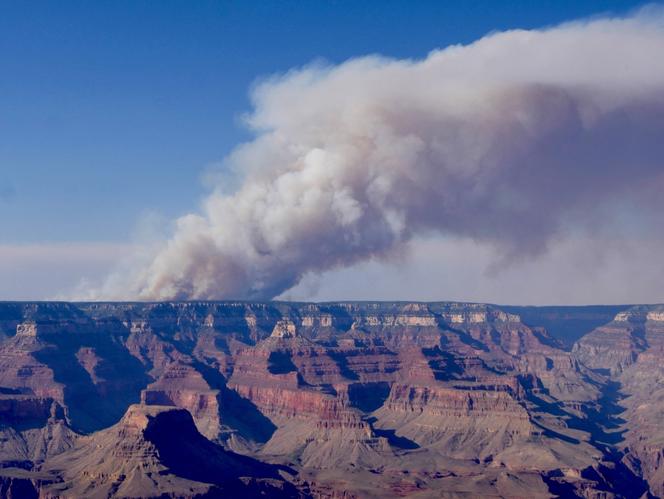


A wildfire that tore through a historic Grand Canyon lodge and raged out of control Monday, July 14, had been allowed to burn for days before erupting over the weekend, raising scrutiny over the National Park Service’s decision not to aggressively attack the fire right away.
The wildfire along the canyon's more isolated North Rim where most visitors don't venture was burning quickly with no containment, fire officials said. No injuries had been reported, but more than 70 structures were lost, including a visitors center and several cabins.
At first, the fire didn’t raise alarms after igniting from a lightning strike on July 4. Four days later, the Park Service said the fire was being allowed to burn to benefit the land and fire crews were keeping close watch. "There are no threats to infrastructure or public safety at this time," the park said on Facebook.
Then three days later, on Friday, fire officials and the park service sent out warnings to "evacuate immediately" as the fire grew by nearly eight times within a day to more than 300 hectares.
Arizona Governor Katie Hobbs called for a federal investigation into the Park Service’s handling of the fire. "The federal government chose to manage that fire as a controlled burn during the driest, hottest part of the Arizona summer," the governor said in a social media post Sunday.
Authorities first used a "confine and contain" strategy but shifted to aggressive suppression as the fire − one of two that firefighters are dealing with on the North Rim − rapidly grew because of hot temperatures, low humidity and strong wind gusts, fire officials said.
The Associated Press left phone and email messages Monday with a park service spokesperson seeking comment about how the fire was managed.
The fire destroyed the Grand Canyon Lodge, the only lodging inside the park’s North Rim, along with employee housing and a wastewater treatment plant, park Superintendent Ed Keable said Sunday.
Park officials have closed access for the rest of the year to the North Rim, a less popular area that draws only about 10% of the Grand Canyon’s millions of annual visitors.
Hikers in the area were evacuated and rafters on the Colorado River, which snakes through the canyon, were told to bypass Phantom Ranch, an outpost of cabins and dormitories. Trails to the area from the canyon’s north and south rims also were closed.
Across the West, about three dozen fires were burning uncontained and another 80 fires were being managed to clear out vegetation that has clogged the landscape, according to the National Interagency Fire Center in Boise, Idaho. So far this year, nearly 2.5 million acres have burned. That’s slightly below the 10-year average, the center said Monday.
